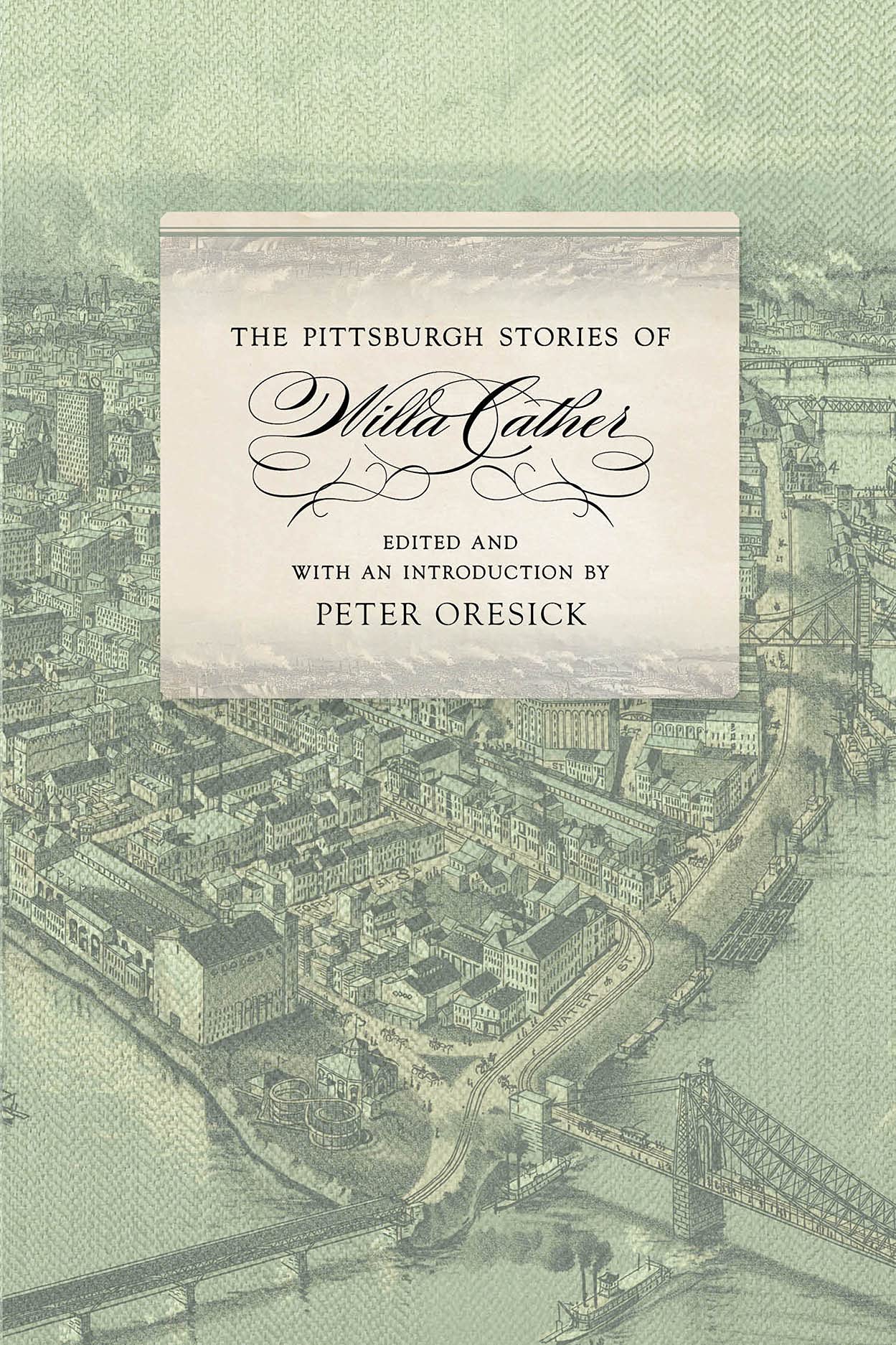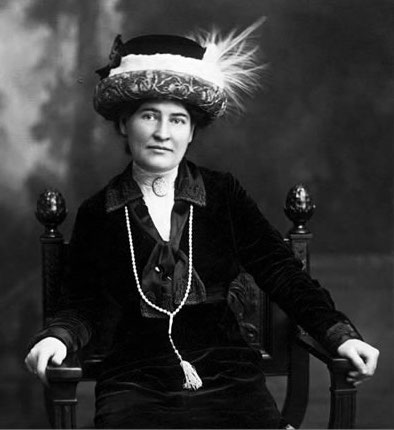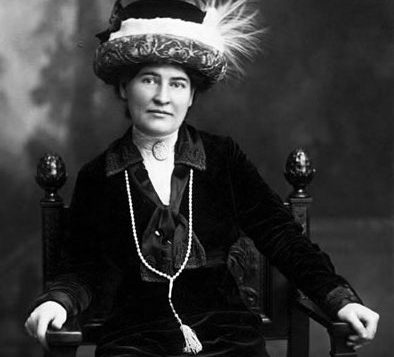 WILLA CATHER’S PITTSBURGH
WILLA CATHER’S PITTSBURGH
Edited by Timothy W. Bintrim, James
A. Jaap, and Kimberly Vanderlaan
Univ. of Nebraska. 378 pages, $40.
A TITLE can sometimes be a little misleading. Willa Cather’s Pittsburgh focuses less on the city than on Willa Cather, who worked there as editor, journalist, and teacher from 1896 to 1906 before deciding to become a full-time writer. These fourteen essays on the author of O Pioneers!, My Ántonia, and Death Comes for the Archbishop originated at an academic conference, and they consider this formative period in Cather’s development into a nationally recognized author. Cather made enduring friendships in her Pittsburgh years and met Edith Lewis, who would become her life partner. The essays are roughly chronological but independent of each other. Ann Romines’ prologue, “Becoming Miss Cather From Pittsburgh,” loosely knits them together.
Born in Virginia in 1873, Cather moved with her family to Nebraska when she was nine years old. She left the Midwest at the age of 22 and spent most of her adult life in New York City, where she died in 1947. Her move to Pittsburgh took place after graduation from the University of Nebraska to take a job as editor of The Home Monthly, a knock-off of the Ladies’ Home Journal. The city had a population of over 250,000 people. Iron, steel, and glass manufacture were exploding, spewing incessant fumes, smoke, and noise. As Romines notes, Cather dubbed the place “this City of Dreadful Dirt” as soon as she got there. But the energetic newcomer came to appreciate the city’s hills, rivers, and metropolitan openness.
According to Daryl Palmer in his lively essay, “Bicycles and Freedom in Red Cloud [Nebraska] and Pittsburgh,” the plucky Cather bicycled all over town in heavy, ankle-length skirts, often racing streetcars in the process. Palmer points to her 1896 Home Monthly story, “Tommy the Unsentimental,” which supported a woman’s choice to be independent, even of expected gender behavior, to achieve success. Heroine Tommy bluntly differentiates, for example, between “the New Woman and the traditional lady, women who desire men and women who do not.” She abjures a man’s proposal of marriage, arguing that “maturity is all about self-knowledge and an honest response to the complexities of gender and sexuality.” Palmer thinks Tommy may have been modeled on Cather’s college crush, the indefatigable cyclist Louise Pound, who would become the first woman inducted into the Nebraska Sports Hall of Fame and the first woman president of the Modern Language Association.

Even before Cather got to Pittsburgh, the ultra-wealthy industrialist Andrew Carnegie was erecting art and natural history museums, concert halls, libraries, and technical schools, and city residents were in touch with world affairs. Many were Presbyterians, and by the turn of the century their congregations had sent dozens of missionaries across the Pacific to convert the Chinese. In his vivid essay on the Boxer Rebellion, Timothy Bintrim highlights the violence against all foreigners that “swept across Northern China like prairie fire during the summer of 1900,” with Pittsburgh clergy among those killed. Cather did not refrain from criticizing the Presbyterians in her story “The Conversion of Sum Loo,” which suggests that “the missionaries of Pittsburgh deserved much of the trouble they received at the hands of the Boxers.”
An insightful essay by the late Angela Conrad, to whom Willa Cather’s Pittsburgh is dedicated, uses the metaphor of alchemy to interpret Cather’s 1905 short story set in Pittsburgh, “Paul’s Case.” When the hero finds himself unable to sustain the art-filled, indolent lifestyle he is leading with stolen money, he commits suicide by jumping in front of an oncoming train. “It seems Cather linked Pittsburgh, whose forges produced mythical quantities of steel and glass by merely chemical means, with … attempts at alchemical transformation,” Conrad says. In this way, the author contrasts “genuine transformation through cultural purgation with the false transformations created solely through increasing wealth.”
While Cather left little direct evidence of her feelings, she formed two important friendships at the time. The first was with Isabelle McClung, daughter of a prominent Pittsburgh judge. Romines says McClung offered Cather “intelligent and solicitous companionship.” When they met in 1900, Cather was working as an independent journalist but yearning to write fiction. After McClung offered her a room with private space to write in her family’s elegant home, staffed by servants, Cather thought for a while and then signed on. She started teaching at Central High School, a job with summers off, and in 1902 published her first story set in Pittsburgh, “The Professor’s Commencement.”
The second deep friendship Cather made was with Edith Lewis, whom she met in 1903, in Lincoln, Nebraska, where both were visiting family. Afterward Lewis returned to New York City where she worked as a proofreader, and Cather went back to Pittsburgh. She visited Lewis in each of the next two summers and in 1906 accepted an editorial job at McClure’s Magazine—and moved to New York City. Before long, she and Lewis were sharing an apartment in what scholar Melissa Homestead has elsewhere described as “something like [a]Boston marriage.”
In her memoir Willa Cather Living, Lewis says that Cather was then at “the threshold of her writing career.” Cather’s first novel, Alexander’s Bridge, was published in 1912. Romines states that Lewis keenly understood the “perpetual homesickness” that drove her mate’s travel and writing, and Homestead sees Lewis as the novelist’s intimate domestic partner and literary collaborator. These descriptions fit the tone of Cather’s single existing letter to Lewis, written in 1936. It begins: “My Darling Edith.”
If Willa Cather’s Pittsburgh doesn’t probe personal relationships, Todd Richardson’s inventive essay, “The Most Exciting Attractions Are Between Two Opposites that Never Meet,” touches on the writer’s sensual life. Richardson imagines Cather meeting Pittsburgh-born artist Andy Warhol (1928-1987), whose life overlapped with hers by nearly two decades. Her style was conventional while his was flamboyant, but they had other things in common. Both moved from Pittsburgh to New York City at some point in their careers, and both had “complicated relationships to gay identity” but maintained long-term same-sex relationships. Cather never came out publicly as a lesbian, Richardson reports, and Warhol’s relationship with Jed Johnson “remains simultaneously obvious and opaque.” He adds that, “like Warhol, Cather wanted to be known and was not afraid to court attention,” but unlike Warhol she also loved “anonymity and seclusion.”
The essays in Willa Cather’s Pittsburgh look at the novelist’s creative incubation from idiosyncratic angles. They describe Cather’s work, connections, and ambitions as a young adult, and several neatly assess characters in her early fiction who disdain heteronormative expectations. The book’s notes are useful, though a brief chronology might make it easier to navigate these essays.
Rosemary Booth is a writer and photographer living in Cambridge, MA.






